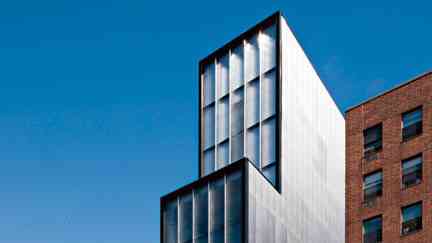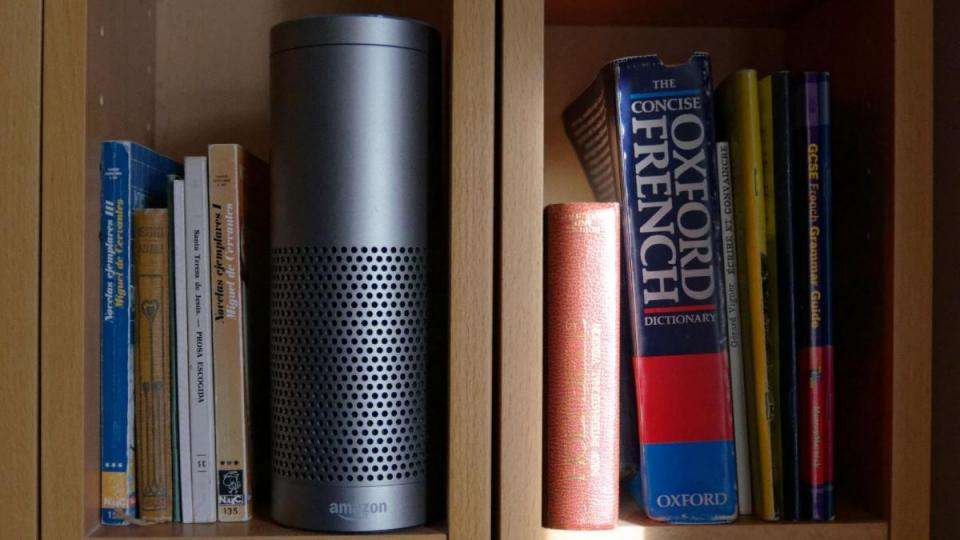September 29,2022
Creative Edge
by David Stewart
View Slideshow

There are few architects who generate headlines as frequently as Norman Foster, whose elegantly provocative projects range from the Swiss Re building (2004), which stands insouciantly on the London skyline like an upended pickle, to the Hearst Tower in New York City (2006), an origami-esque composition of glass and steel that critic Paul Goldberger proclaimed "the most beautiful skyscraper to go up in New York since 1967." Not long ago, the New York Public Library enjoined the architect—Baron Foster of Thames Bank to the Debrett 's set—to rethink its Fifth Avenue landmark, and while that plan has been delayed, two U.S. commissions from Foster + Partners have just opened their doors: an intimate art gallery for Sperone Westwater in Lower Manhattan, and a masterful reorganization and expansion of the Museum of Fine Arts, Boston .
Though their scales could not be more different, the projects share one attribute: They both jolt the senses. Sperone Westwater rises from its lot on the Bowery like a switchblade, its eight-story shaft of ink-dark metal and transparent corrugated glass a startling contrast to a streetscape of Victorian redbrick buildings housing kitchen-supply stores. "The richness of so many cities stems from the fact that successive generations had the confidence to make their own stamp," Lord Foster explains. The building's narrow footprint, 25 feet wide by 100 feet deep, is historically sensitive—it replaced a 19th-century structure—but space limitations did not stifle the architect's creativity. Sperone Westwater is appointed with varied interiors that allow for art writ large or small: a 29-foot-high main gallery, a chapel-like chamber washed with natural light, cozy culs-de-sac, and even a treetop terrace for outdoor pieces. Most of the rooms offer hints of the spaces beyond to encourage exploration, the architect says. Especially eye-catching is a fire-engine-red freight elevator that slides up and down behind the glass façade. (Nervous Nellies beware: The floor of the elevator is also the ceiling of the lobby, so do not be alarmed as it descends in trash-compactor fashion.) "It's a moving room that gives us the ability to expand," says gallerist Angela Westwater, noting that the cab functions as exhibition space, whether it is in transit or opened on any floor.
Foster + Partners' master plan for the Museum of Fine Arts, Boston, was a far more ambitious commission, but with identical goals: to show art effectively and to offer a fluid viewing experience. Like the firm's acclaimed renovations of the Reichstag in Berlin (1999) and the British Museum in London (2000), the $345 million Boston project clarifies, expands, and energizes a landmark. In this case the anchor is a Beaux Arts palace visited by more than a million people each year. "It had grown and evolved over time, with architectural interventions of different styles and periods," says Foster, who worked on the project with senior partner and head of design Spencer de Grey and partner Michael Jones (the Boston firm CBT Architects/Childs Bertman Tseckares Inc. was the architect of record). "One aspect of our challenge was to reinstate the logic of the original plan"—conceived in the early 20th century by blue-blooded architect and landscape designer Guy Lowell—"and to rebalance the composition. We also had to equip it to meet the needs of a new century in terms of technical facilities and energy performance. In that sense the project had forensic and archaeological dimensions."
Foster's pièce de résistance was the colonization of an existing courtyard, where he erected an immense glass box that is the new hub of the complex. At 63 feet high by 90 feet wide by 135 feet long, it is a gathering place offering views of a landscaped garden, the Beaux Arts building, and the new Art of the Americas wing—a patchwork of glass and stone that is as dazzling to the eye as the curatorial derring-do that informs its sunny galleries. Treasures from North, Central, and South America celebrate the culture of the New World, from an Olmec jadeite mask to John Singer Sargent's 1882 painting The Daughters of Edward Darley Boit .
The four-story Art of the Americas addition, like Sperone Westwater, quietly acknowledges its surroundings while asserting its own character. In then-meets-now projects such as these, Foster notes, the results may be different, but the goal is always the same: "to enhance the old by relying on sensitive juxtaposition rather than historical pastiche."






